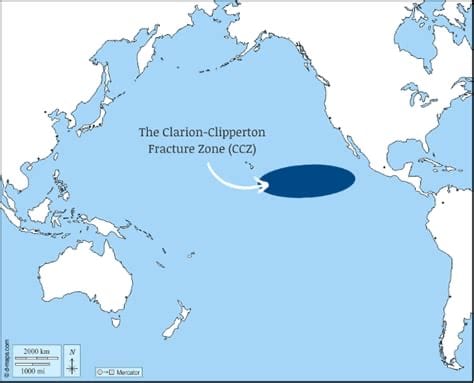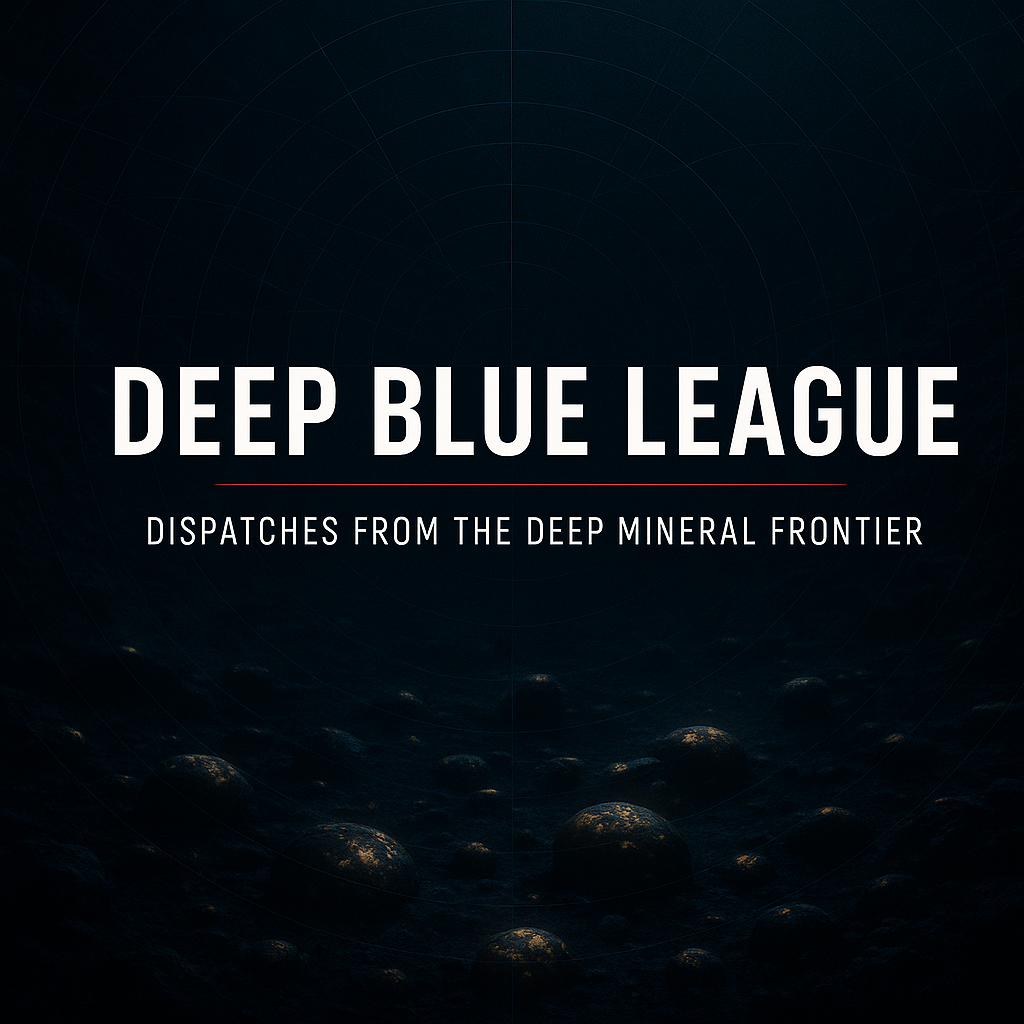The Clarion‑Clipperton who?
The battle for access you care about, but don't know it yet
The world’s biggest mineral cache lies in international waters and the race for access is on big time. Most people aren't even aware this is happening, but Deep Blue League is about to track what could be the defining battle of the 21st century.
Dripping in minerals
Beneath a vast section of the high sea where no country has jurisdiction, minerals carpet the ocean floor.
They're packed in potato-sized rocks called poly-metallic nodules, each one worth hundreds of dollars in cobalt, nickel, and manganese, among other rare earth elements.
Here, these minerals are more abundant than they are on land and so numerable, they're enough to power the entire transition towards decarbonisation and build the chips and data centres needed for artificial intelligence - the two biggest developments driving the 21st century. Some argue that without these sea rocks, those mega trends may even stall.
This is the Clarion-Clipperton Zone (CCZ), and it’s ground zero for an urgent resource war shaping up amongst global players. At one end, commercial miners and their sponsor countries like Russia, China and small players like Nauru or ambitious ones like Singapore. At the other end, are the conservationists and countries vehemently opposed, like France. In the middle, the beleaguered regulator - The International Seabed Authority. And somewhere hovering is the United States of America, itself keen on minerals but playing from the shadows.
Deep Blue League breaks down all the players and promises to track the intrigue. But first, about the zone.
What's really down there
The CCZ is a region of seabed in the Pacific Ocean between Hawaii and Mexico. It's roughly the width of the entire continental United States and about half its land mass in total.

This area is chock full of the metal and minerals global players are after to win the 21st century, as politicians like to put it. The regulator estimates about 21 billion tons is just sitting on the ocean floor of this region alone.
There's manganese. Used in EV batteries and steel production, the CCZ contains roughly 6 billion tons, more than the mineable amount on land.
Nickel. An essential ingredient in the lithium-ion batteries essential for powering electric vehicles (EVs), the CCZ contains roughly 270 million tons, three to five times more than all known exploitable land deposits.
There's cobalt. Also used in batteries for EVs, wind turbines, and some AI related technologies, the CCZ has roughly 50 million tons, magnitudes above what's available on land.
And then there's copper. Needed for AI chips and data centres, the CCZ contains roughly 230 million tons, about a third of land reserves.
The metal rich nodules also contain varying amounts of other rare Earth elements essential for AI and many modern technologies.
Forget Treasure Island. This is the new hidden gem.
It could be existential
But as mineral rich as the CCZ is, it may be even richer in another respect: life. The area is so rich in species, that it's thought there are thousands yet unknown to man.
Oceanographers who initially thought life was impossible at such depths have since discovered a vast range of species and ecosystems - creatures living without much light in extreme cold - uniquely adapted to what humans and other better known sea creatures would consider a hostile environment by any measure.
But they're not just interesting. They might be existential. To us, them and earth. Scientists say some of these could be keystone species - having an outsized impact on ecosystems and the entire planet.
So what does it mean to get those minerals? And who decides who gets them?
That's where the International Seabed Authority comes in. So let's talk about the regulator.
#BattlefortheBlue #DeepSeaMining #CriticalMinerals #AIInfrastructure #Geopolitics #Tradewar
